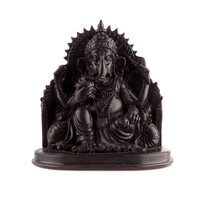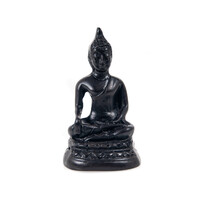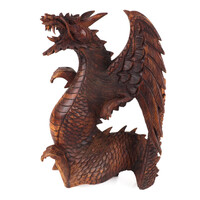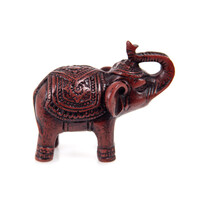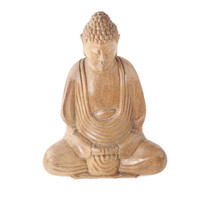Why buy from us?
Everything in Stock
Free Shipping
Consulting
Large Warehouse
Product description Statuette Metal Buddha 20 cm 01
BUDDHA (awakened one)
Gautama Buddha was born around 600 BC, as Prince Siddhartha, to a royal family in the city of Lumbini (in present-day Nepal). At the moment of his birth, gods and goddesses appeared in the sky, filled with joy at his birth, and gave him omens that foretold his extraordinary destiny.
The Buddha spent his childhood and youth in prosperity and received an excellent education. Throughout his life in the palace, he was surrounded only by beautiful people, beautiful things, the freshest flowers and exquisite food. Anything even seemingly subject to decay, anything diseased, old or unsightly, was deliberately hidden from the Buddha, at his father's behest, or immediately removed from his reach. The king greatly desired that his only son should become a great ruler, greater than himself. And the Buddha fulfilled all his expectations.
One day the Buddha rode out of the royal gardens on horseback. Outside the walls of his palace he saw suffering, sickness and death, aspects of life completely unknown to him. At the same time, the Buddha becomes the new father of a young son, born by his beloved wife. The Buddha understands that suffering, sickness and death will one day await them too, so he decides to leave and seek the possibility of liberation for all. At the age of 29, he leaves prosperity (the first extreme) and goes in search of the truth of life, to find the nature of suffering and a way to be free from the pervasive suffering. On his long journey, the Buddha encounters different perspectives and approaches on the path to truth. The Buddha becomes a disciple of two eminent gurus and, for a time, a strict ascetic (the other extreme), but neither of these approaches (neither the life of asceticism nor the life of enjoyment) leads him to the knowledge he seeks. Is there another way, another way? The Buddha finds the answer in the memory of an experience in his youth when he immersed himself in the present moment and experienced unconditional joy and happiness. The Buddha recognizes that this is the path leading to awakening, and so for the next few days he devotes himself to this new practice. After a few days, the Buddha attains knowledge and enlightenment.
The Buddha formulates the four noble truths: the first truth describes the omnipresent suffering, the second truth seeks the cause of suffering (craving and desire), the third truth formulates the way to get rid of suffering, and the fourth truth describes the eightfold path leading to the cessation of suffering.
Buddha lays the foundation for the new religion (Buddhism) and its monastic orders. In his teachings, he shows people the way how it is possible to break out of the cycle of rebirth (samsara) and attain ultimate liberation (nirvana). The Buddha teaches how to follow the "middle path", the path of balance instead of extremism. He spends the rest of his life explaining his knowledge in detail and teaching his way to attain it. He dies at the age of 80.
Buddha is usually depicted with a shaved head or short-cropped hair, sometimes with a crown. His colour is golden.

 Kaloud
Kaloud
 KLIFIDES
KLIFIDES
 marvin smoke
marvin smoke
 DARKSIDE
DARKSIDE


